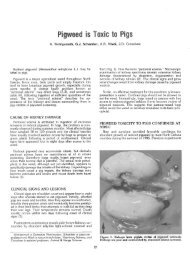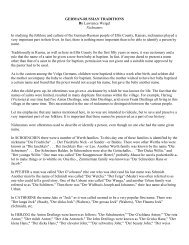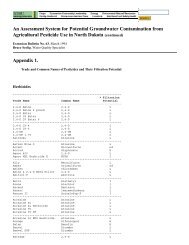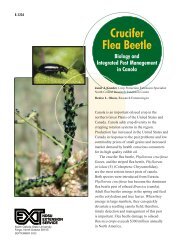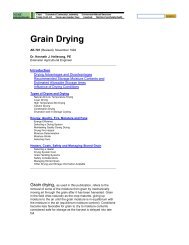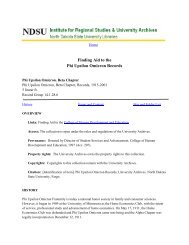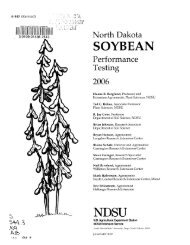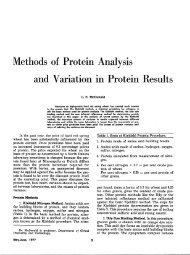Biology and Management of Biennial Wormwood
Biology and Management of Biennial Wormwood
Biology and Management of Biennial Wormwood
Create successful ePaper yourself
Turn your PDF publications into a flip-book with our unique Google optimized e-Paper software.
<strong>Biology</strong> <strong>and</strong><strong>Management</strong> <strong>of</strong><strong>Biennial</strong> <strong>Wormwood</strong><strong>Biennial</strong> wormwood is an aggressive <strong>and</strong> prolific seed-producing plant thathas become a problem mainly in soybean <strong>and</strong> dry edible bean productionareas <strong>of</strong> Minnesota, North Dakota <strong>and</strong> South Dakota. <strong>Biennial</strong> wormwood,as its name infers, was primarily biennial when the species first was classified,but weedy cropl<strong>and</strong> biotypes <strong>of</strong> biennial wormwood are annual plants. Manyfactors, such as season-long emergence, prevalence in moist environments,adaptation to all tillage systems, tolerance to commonly used soil-applied<strong>and</strong> postemergence herbicides, <strong>and</strong> misidentification <strong>of</strong> biennial wormwoodas common ragweed, contribute to increased biennial wormwoodinfestations. Some herbicides used to control common ragweed do notcontrol biennial wormwood.Figure 1. <strong>Biennial</strong> wormwood seedlings approximately seven days afteremergence.2Figure 2. <strong>Biennial</strong> wormwood seedling approximately three to four weeks afteremergence.



